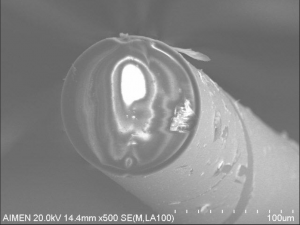![]() 24/01/2022
24/01/2022
Sensors development and embedding
ENGIONIC (formerly LOPTEK) is leading the creation of sensors and their implementation. More specifically, ENGIONIC will develop robust high temperature and strain fibre optics sensors and an advanced electrochemical sensor. These sensors will be then embedded in the selected materials components that will be implemented during the demonstration phase to monitor temperature/strain but also corrosion and degradation phenomena in situ and in real time. ENGIONIC will partner up with AIMEN and TUPRAS for these activities. They already started working as of November 2021.
Currently, ENGIONIC has already started to explore possible routes for receiving ruggedized metal-coated fibre optic sensors based on Fibre Bragg Gratings (FBG). Firstly, ENGINIC narrowed the possibilities down to two strategies. The first strategic approach is based on state-of-the-art methods by inscribing the FBG in a fibre which is already metal coated. The aim of the second approach is to bring the fabrication of metal coated FBG sensors to a more industrial level with the possibility of high-volume production.
Therefore, ENGIONIC and AIMEN will test and evaluate different fibre types according to their suitability for FBG inscription as well as metal coating. The most promising fibre types will then be tested for metal-coating. In parallel the FBG inscription metal coated fibre will be established.
AIMEN and ENGIONI have begun testing the glass fibres. In the next step, partners will coat the glass fibres with metal for Fibre Bragg Grating (FBG) inscription. Figure 1 below shows a FOS with a gold coating. These coated FOS will be then incorporated during the Direct Energy Deposition using laser beam (DED-LB) process.

Figure 1. Fibre optic sensors with a gold coating.
Additionally, ACHIEF partners are discussing the final design of the electrochemical sensor in order to achieve a technically viable solution of installation in TUPRAS. Thus, it will guarantee the installation safety and the sensor functionality to monitor corrosion processes under both operating conditions and in real time.




